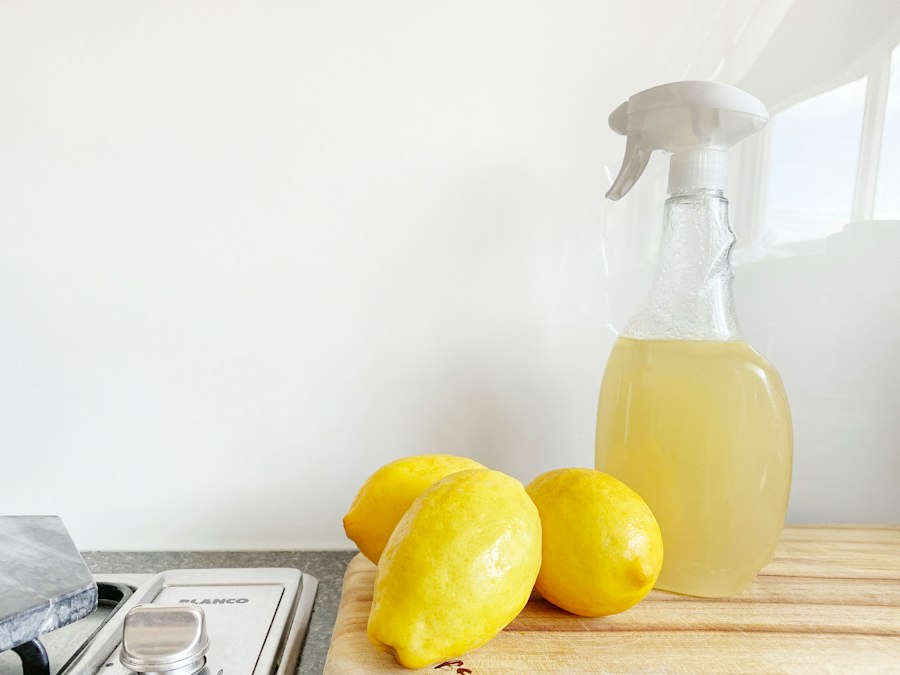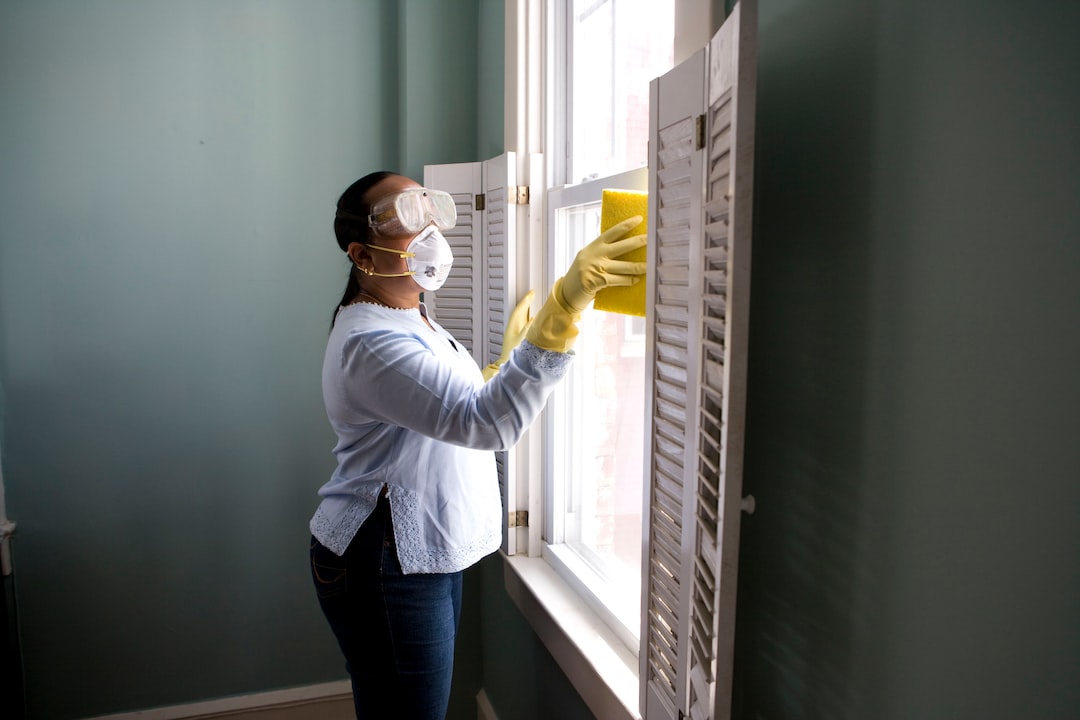Dirty tile and grout can have several negative effects on your home or business. Firstly, it can make the space look unkempt and unhygienic. Stains, discoloration, and grime can make even the most beautiful tiles appear dull and dirty. This can be particularly problematic in commercial settings where cleanliness is crucial for creating a positive impression on customers.
In addition to the aesthetic issues, dirty tile and grout can also pose health risks. Mold, mildew, and bacteria thrive in damp environments such as bathrooms and kitchens. If left untreated, these microorganisms can cause respiratory problems, allergies, and other health issues. Regular cleaning and maintenance of tile and grout are essential for preventing the growth of these harmful substances.
The Benefits of Using Scrubs and Brushes for Tile Cleaning
Using scrubs and brushes for tile cleaning offers several advantages over other cleaning methods. Firstly, they provide a more thorough clean by agitating the dirt and grime that has settled on the surface of the tiles and in the grout lines. This agitation helps to loosen and remove the dirt, leaving your tiles looking clean and fresh.
Secondly, scrubs and brushes are versatile tools that can be used on a variety of tile surfaces. Whether you have ceramic, porcelain, natural stone, or any other type of tile, there is a scrub or brush that is suitable for the job. This versatility makes them a cost-effective option as you can use the same tool for multiple surfaces.
Types of Scrubs and Brushes for Tile and Grout Cleaning
There are several types of scrubs and brushes available for tile and grout cleaning, each with its own specific uses and benefits. Here are some of the most common types:
1. Nylon Bristle Brush: This brush is ideal for cleaning delicate tile surfaces such as ceramic or porcelain. The soft nylon bristles are gentle enough to avoid scratching the tiles while still effectively removing dirt and grime.
2. Stiff Bristle Brush: A stiff bristle brush is suitable for more durable tile surfaces such as natural stone or quarry tiles. The stiff bristles can effectively scrub away tough stains and grime without causing any damage to the tiles.
3. Grout Brush: As the name suggests, a grout brush is specifically designed for cleaning grout lines. It usually has stiff bristles that can reach into the narrow spaces between tiles to remove dirt and stains.
4. Electric Scrubber: An electric scrubber is a powered tool that makes tile cleaning easier and more efficient. It typically comes with interchangeable brush heads that can be used on different tile surfaces.
How to Choose the Right Scrub or Brush for Your Tile Surface
When choosing a scrub or brush for your tile surface, there are several factors to consider. Firstly, you need to determine the type of tile you have as different materials require different cleaning methods. For example, natural stone tiles may require a softer brush to avoid scratching the surface, while ceramic tiles can withstand a stiffer bristle brush.
You should also consider the condition of your tiles and grout. If they are heavily stained or have deep-seated dirt, you may need a more aggressive scrub or brush to effectively clean them. On the other hand, if your tiles are relatively clean and just need a light touch-up, a softer brush may be sufficient.
Lastly, consider your own comfort and convenience when choosing a scrub or brush. Some people may prefer the ease of use and efficiency of an electric scrubber, while others may prefer the control and precision of a handheld brush. Choose a tool that you feel comfortable using and that will make the cleaning process more enjoyable for you.
Techniques for Effective Tile and Grout Cleaning with Scrubs and Brushes
To effectively clean your tiles and grout using scrubs and brushes, follow these step-by-step guidelines:
1. Prepare the area: Remove any loose debris or dirt from the surface of the tiles by sweeping or vacuuming. This will prevent the dirt from being spread around during the cleaning process.
2. Apply a cleaning solution: Depending on the type of tile and the level of dirtiness, choose an appropriate cleaning solution. There are many commercial tile and grout cleaners available, or you can make your own using household ingredients such as vinegar and baking soda. Apply the cleaning solution to the tiles and grout lines, ensuring that they are thoroughly saturated.
3. Let the solution sit: Allow the cleaning solution to sit on the tiles and grout for a few minutes to loosen the dirt and stains. This will make it easier to remove them with the scrub or brush.
4. Scrub the surface: Using your chosen scrub or brush, start scrubbing the tiles and grout lines in a circular motion. Apply firm pressure but be careful not to damage the tiles. Pay extra attention to any heavily stained or dirty areas.
5. Rinse the surface: Once you have scrubbed the entire surface, rinse it thoroughly with clean water to remove any remaining cleaning solution and dirt. You can use a mop or a sponge to wipe away the excess water.
6. Dry the surface: Finally, dry the tiles and grout lines using a clean towel or a dry mop. This will prevent any water spots or streaks from forming and will leave your tiles looking clean and shiny.
Tips for Maintaining Your Tile and Grout after Cleaning

To keep your tile and grout looking clean and fresh after cleaning, follow these tips:
1. Regularly sweep or vacuum the surface to remove loose dirt and debris. This will prevent them from settling into the grout lines and causing discoloration.
2. Wipe up spills immediately to prevent them from staining the tiles or seeping into the grout lines.
3. Use doormats at entrances to trap dirt and prevent it from being tracked onto your tiles.
4. Avoid using harsh chemicals or abrasive cleaners on your tiles as they can damage the surface. Stick to mild, pH-neutral cleaners that are safe for your specific tile material.
5. Periodically reseal your grout lines to protect them from stains and moisture. This will help to maintain their appearance and prevent mold and mildew growth.
Common Mistakes to Avoid When Cleaning Tile and Grout
When cleaning tile and grout, there are several common mistakes that people make that can lead to unsatisfactory results. Here are some mistakes to avoid:
1. Using too much water: Excessive water can seep into the grout lines and cause them to become weak or discolored. Use only as much water as necessary for cleaning and ensure that you dry the surface thoroughly afterward.
2. Using abrasive tools or cleaners: Scrubbing too aggressively or using abrasive cleaners can scratch or damage the surface of your tiles. Stick to softer brushes and mild cleaners to avoid causing any harm.
3. Neglecting to rinse properly: Failing to rinse the tiles and grout lines thoroughly can leave behind residue and cleaning solution, which can attract dirt and make the surface look dull. Always rinse with clean water after scrubbing.
4. Not protecting surrounding surfaces: When using cleaning solutions or scrubbing, be mindful of nearby surfaces such as walls or countertops. Some cleaning solutions can damage or stain these surfaces, so take precautions to protect them.
The Role of Professional Tile and Grout Cleaning Services
While regular maintenance and cleaning can keep your tiles and grout looking their best, there may come a time when you need to consider hiring a professional tile and grout cleaning service. Professional cleaners have specialized equipment and expertise that can achieve a deeper clean than what is possible with DIY methods.
Professional tile and grout cleaning services use high-pressure steam cleaners, specialized brushes, and professional-grade cleaning solutions to remove even the toughest stains and dirt. They can also provide additional services such as grout sealing or color restoration to enhance the appearance of your tiles.
Achieving a Clean and Healthy Tile Surface with Scrubs and Brushes
In conclusion, maintaining clean tile and grout is essential for both aesthetic and health reasons. Using scrubs and brushes for tile cleaning offers several advantages, including a more thorough clean and versatility for different tile surfaces. By choosing the right scrub or brush for your specific tile material and following proper cleaning techniques, you can achieve a clean and healthy tile surface.
Regular maintenance, such as sweeping or vacuuming, wiping up spills promptly, and using doormats, can help to prevent dirt and stains from accumulating on your tiles. Avoiding common mistakes such as using too much water or abrasive tools will ensure that you achieve the best results without causing any damage.
If you find that your tiles and grout are heavily stained or require a deeper clean, consider hiring a professional tile and grout cleaning service. They have the expertise and equipment to achieve a thorough clean and can provide additional services to enhance the appearance of your tiles. With proper maintenance and regular cleaning, you can enjoy clean and beautiful tiles for years to come.
If you’re looking for the best tools to clean your tile and grout, look no further than Floorbotics. Their website offers a wide range of products specifically designed for this purpose. In fact, they have an entire section dedicated to tile and grout cleaning tools, including scrubs and brushes that effectively remove dirt and grime from both the surface and grout lines. To explore their selection, visit their sitemap at https://floorbotics.com.au/sitemap.html or check out their tile and grout cleaning tools directly at https://floorbotics.com.au/.
FAQs
What is tile and grout cleaning?
Tile and grout cleaning is the process of removing dirt, grime, and stains from the surface of tiles and the grout lines between them.
Why is it important to clean tile and grout?
It is important to clean tile and grout to maintain their appearance and prevent the growth of mold and bacteria. Dirty tile and grout can also be slippery and pose a safety hazard.
What are some tools and products used for tile and grout cleaning?
Tools and products used for tile and grout cleaning include scrub brushes, grout brushes, steam cleaners, and specialized cleaning solutions.
How often should tile and grout be cleaned?
Tile and grout should be cleaned regularly, ideally once a week, to prevent the buildup of dirt and grime. However, the frequency of cleaning may depend on the amount of foot traffic and use the area receives.
Can I clean tile and grout myself or should I hire a professional?
Tile and grout can be cleaned by homeowners themselves using the appropriate tools and cleaning solutions. However, for heavily stained or hard-to-reach areas, it may be best to hire a professional cleaning service.

